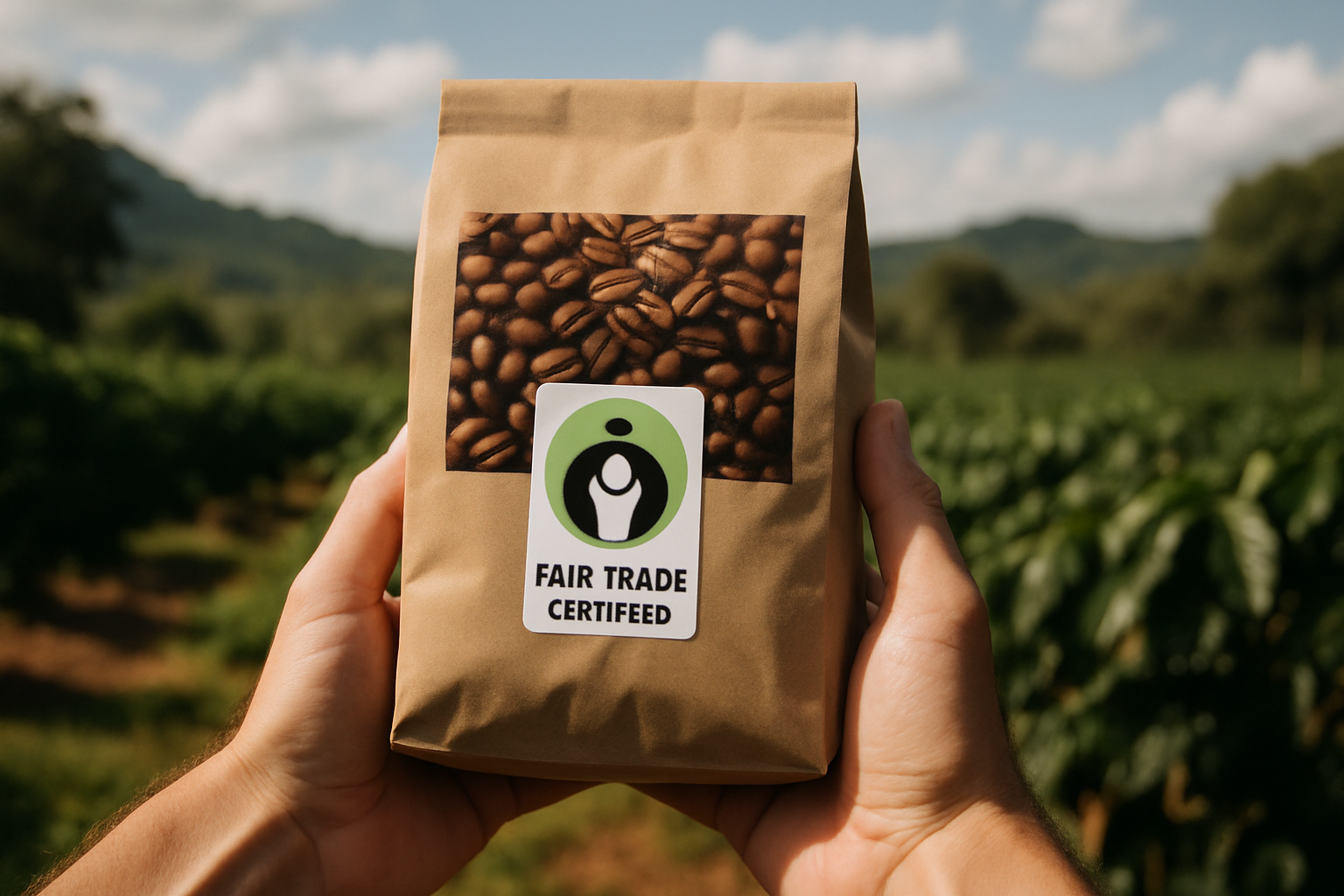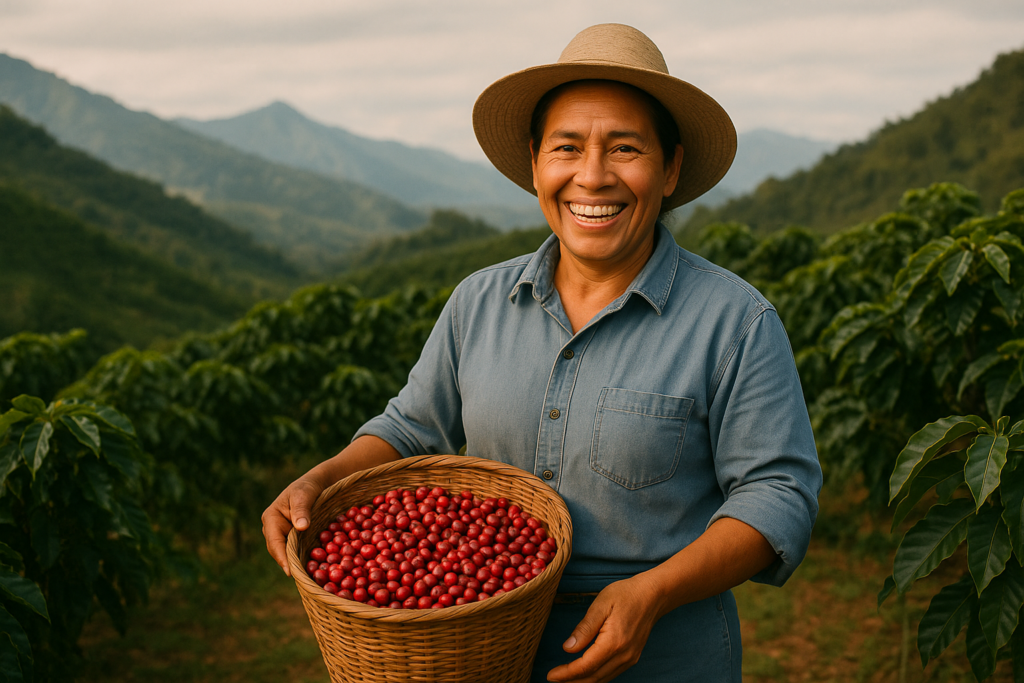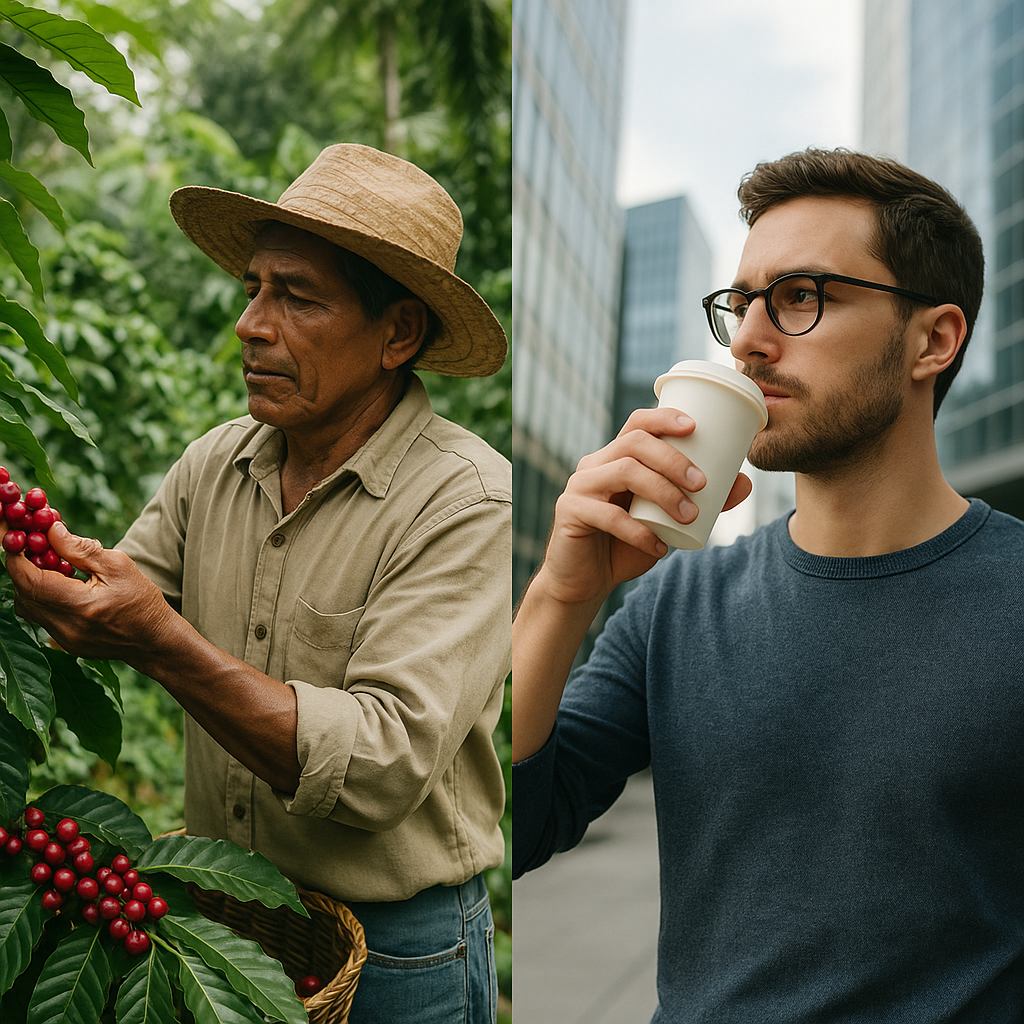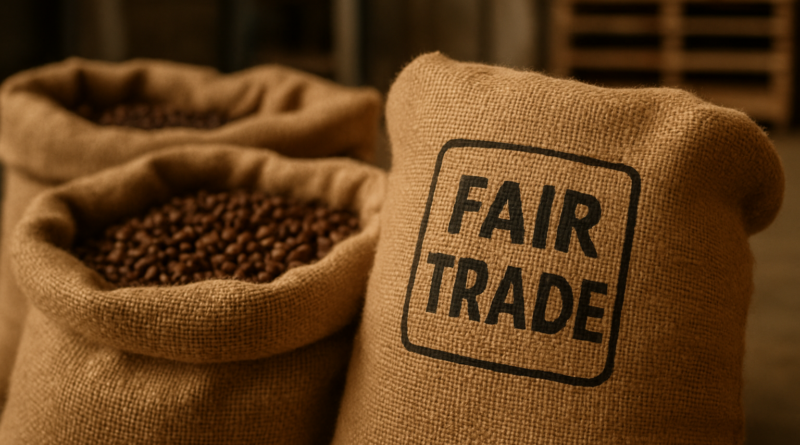Fair Trade Coffee: Is It Really Changing the Trade of Coffee for the Better?
It’s easy to recognize the Fair Trade label—but much harder to explain what it really guarantees. Does it actually help coffee farmers, or is it just a feel-good sticker for shoppers? Beneath the surface, Fair Trade is more than a marketing term—it’s a global system built to fix what’s been broken in coffee trade for decades. But how does it work, and is it living up to its promise?
What Does “Fair Trade” Actually Mean for Coffee?
We’ve all seen the label: Fair Trade Certified. It sits on coffee bags in supermarket aisles, in local cafés, and even in some high-end roasters. But what does it really mean—and does it actually change anything for the people who grow your beans?
At its core, Fair Trade is a certification system designed to make global trade more equitable. For coffee, this usually means a few key things: a minimum price guaranteed to farmers, a Fair Trade premium paid to grower cooperatives to invest in community projects, and standards around labor conditions and environmental practices.
When you buy Fair Trade coffee, you’re not just buying beans—you’re participating in a global effort to create more predictable and transparent trading conditions. That minimum price is especially important in the coffee industry, where market prices can swing dramatically due to weather, speculation, or global demand shifts. For small-scale farmers who rely on coffee as their main source of income, Fair Trade aims to provide a safety net.
But it’s not just about money. Fair Trade also sets social standards. Certified producers are typically organized into cooperatives or associations, with democratic decision-making and shared investment into things like clean water access, schools, or processing equipment. It’s meant to be a model that supports both individual livelihoods and broader community resilience.
That said, the Fair Trade label isn’t a magic stamp. It’s part of a bigger conversation about how we trade, what we value, and how much of the coffee industry’s profits make it back to the people who grow it.
Why It Was Created in the First Place
To understand why Fair Trade exists, you first have to understand how unfair the coffee trade has historically been.
For decades—arguably centuries—coffee farmers in developing countries have shouldered the hardest work of the supply chain while receiving the smallest share of its rewards. Most of the value in a cup of coffee has long been concentrated further up the chain: in exporting, roasting, branding, and retail. Meanwhile, smallholder farmers have often been left vulnerable to global price shocks, climate volatility, and the power imbalances of international trade.
This imbalance became especially visible during the coffee crisis of the late 1990s and early 2000s, when global coffee prices collapsed, dropping below the cost of production for many farmers. Families abandoned their farms, poverty deepened, and communities struggled to survive. That crisis sparked new urgency among activists, non-profits, and consumers to find a more ethical model—one that would ensure farmers weren’t always at the mercy of the market.

Fair Trade was developed as a response. It aimed to create stability in an otherwise unstable system, offering a guaranteed minimum price, fairer terms of trade, and stronger rights for producers. The idea wasn’t to fix everything overnight, but to shift the balance in small, steady ways—bean by bean.
And while the movement started with coffee, it has since expanded to include tea, chocolate, sugar, and many other products where small-scale producers face similar challenges. But coffee remains one of its most iconic battlegrounds—and one where its impact is still being debated.
What Fair Trade Has Accomplished So Far
So, has Fair Trade actually made a difference? In many ways—yes. While it’s not a perfect system, there’s measurable progress in areas that truly matter to farming communities.
One of the most important achievements is the minimum price guarantee. When the global coffee market dips below a certain threshold, Fair Trade-certified cooperatives still receive a baseline price that helps cover basic production costs. That built-in stability can be what allows farmers to get through a bad season rather than walk away from coffee entirely.
Then there’s the Fair Trade premium—an additional sum paid on top of the selling price, which cooperatives invest into community-chosen projects. That might mean building a school, improving access to clean water, setting up better processing equipment, or offering training on climate-resilient farming. These are not abstract ideas—they’re real-world improvements that help make farming more viable in the long term.
Fair Trade also encourages more democratic, transparent systems within farmer organizations. Certified cooperatives must meet governance standards, giving small-scale farmers more say in how their crops are sold and how profits are used. That alone can shift power dynamics in regions where growers have historically had little bargaining power.

And while these efforts won’t fix every challenge in the global coffee trade, they do represent something meaningful: a move away from pure market logic toward shared responsibility. For many farmers, Fair Trade means greater predictability, dignity, and opportunity—especially in regions where volatility has long been the norm.
The Limitations: Does It Go Far Enough?
While Fair Trade has done a lot of good, it’s not immune to criticism—and it’s important to look at those critiques honestly, especially if we want to support systems that keep improving.
One of the biggest challenges is scale and reach. Despite its global recognition, Fair Trade-certified coffee still represents only a small fraction of the coffee market. That means the vast majority of coffee farmers are not covered by the system and continue to face unstable prices and limited protections.
Another issue is that the cost of certification can be a barrier, especially for the smallest producers. Joining a certified cooperative and maintaining compliance with Fair Trade standards takes time, documentation, and money. In some cases, farmers may not see the full benefits of the premium if the cooperative’s management isn’t fully transparent or if demand for Fair Trade beans doesn’t keep up with supply.
There’s also the reality that not all Fair Trade coffee is sold as Fair Trade. If a certified cooperative grows more coffee than Fair Trade buyers purchase, the excess is sold on the conventional market—often at lower prices. That means farmers may not always receive the premium or minimum price on all their beans, even if they meet all the certification requirements.
And finally, some critics argue that Fair Trade focuses more on protecting farmers from risk than on truly transforming the value chain. It offers a safety net, but it doesn’t always challenge deeper inequalities or build long-term independence from global price swings.
Still, for many producers, something is better than nothing—and Fair Trade often provides at least a foothold in a system that has long worked against them. The key is not to expect perfection, but to see it as a step forward in a much larger movement for ethical trade.
What You Can Do as a Coffee Drinker
Choosing Fair Trade coffee might seem like a small act—but it’s one of the simplest ways to connect your daily habit with a bigger global impact.

When you see the Fair Trade Certified label, you’re looking at more than just branding. It means the coffee was grown by farmers who are part of a system that guarantees them a minimum price, additional community funds, and basic labor and environmental protections. That may not fix everything—but it creates more stability in a system that’s been unpredictable and unequal for far too long.
Of course, Fair Trade isn’t the only way to support more ethical coffee. Some roasters work directly with growers, others focus on regenerative agriculture or transparency in pricing. But if you’re scanning the shelves at your grocery store or browsing options online, Fair Trade remains one of the clearest and most accessible signals that a company is trying to do things more responsibly.
So—Is Fair Trade Changing Coffee for the Better?
Yes, but not without limitations. Fair Trade has brought real, measurable improvements to the lives of many small-scale coffee farmers—through more stable pricing, community investment, and a stronger voice in how their work is valued. It shifts some power back to the people at the start of the supply chain and encourages a more ethical way of doing business. That’s no small feat in an industry where inequality has long been the norm.
At the same time, it’s not a perfect system. Fair Trade doesn’t reach every grower, and it doesn’t fix the deeper structural imbalances of global trade. But it’s a step—and sometimes, a step in the right direction is exactly what’s needed to spark broader change. For conscious coffee drinkers, choosing Fair Trade isn’t about chasing purity or perfection. It’s about making thoughtful decisions that align with your values, support real communities, and help shape a coffee world that’s fairer, one cup at a time.

